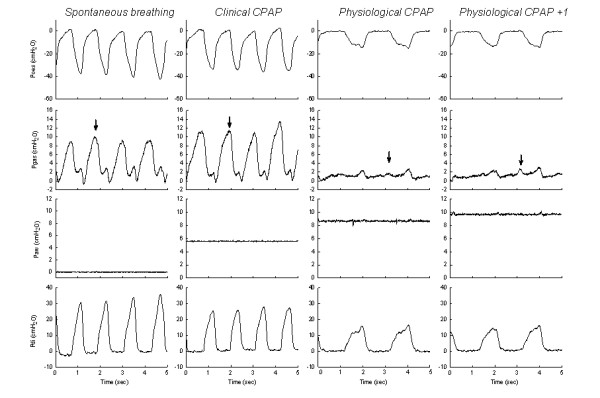Figure 2.

Tracings of patient 9 showing the increases in oesophageal pressure (Poes) swing and transdiaphragmatic pressure (Pdi) swing during spontaneous breathing, together with an approximately 10 cmH2O expiratory gastric pressure (Pgas) swing (arrow). During a clinical setting of noninvasive continuous positive airway pressure (CPAP Clin) (that is, 6 cmH2O), a moderate decrease in the Poes and Pdi swing is observed with the persistence of an approximately 10 cmH2O expiratory gastric pressure (Pgas) swing (arrow). During a physiological setting of CPAP (CPAP Phys), note the important reduction in the Poes and Pdi swings and in the breathing rate with the disappearance of the expiratory Pgas swing (arrow). When the physiological CPAP setting is increased by 1 cmH2O, a moderate increase in expiratory Pgas swing is observed.
